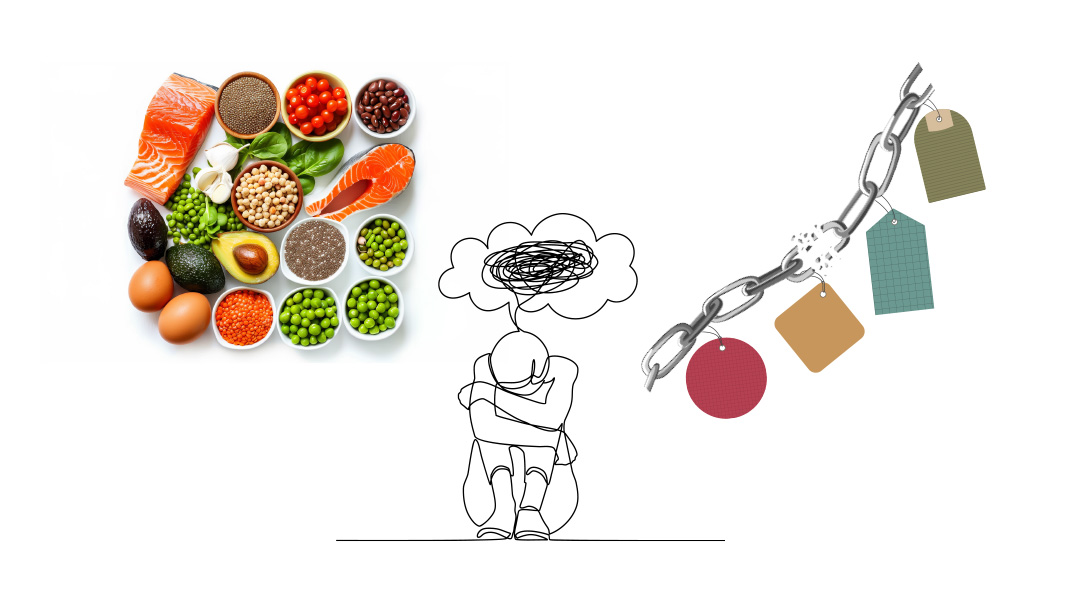Weighing in on Hunger
| February 13, 2024The hunger and fullness scale is a useful tool for assessing hunger and fullness levels before, during, and after a meal

Weighing in on Hunger
Shira Savit
IN
our last installment, we discussed the common phenomenon in which women are afraid to let themselves indulge, even a bit, for fear they won’t be able to stop. We discussed learning to trust our bodies as a healthier alternative to this fear-based method of avoiding food.
Women often wonder: How much is too much? How do I stop when I want more? Why do I feel like I can’t control myself when it comes to carbs?
To answer these questions, it’s helpful to first differentiate between physical hunger and emotional hunger. Physical hunger can sometimes be confusing to recognize; some of us fear being too hungry or too full, and sometimes we just don’t trust our body to tell us what it needs. As we discussed in the previous column, our tendency to seek external solutions — whether rules, limitations, programs, or meal plans — can hinder our ability to trust our body’s wisdom. When we shift our focus inward and listen to our body’s hunger and fullness cues, we will be better equipped to navigate our eating.
The hunger and fullness scale is a useful tool for assessing hunger and fullness levels before, during, and after a meal. The scale serves as a compass, guiding us to recognize physical hunger cues, to notice how different amounts of food affect us, and discern when the desire to eat is rooted in emotional needs.
The scale ranges from 1–10, with one indicating extreme hunger and ten signifying uncomfortable fullness.
1: Empty/starving — painfully hungry, dizzy, poor concentration, loud stomach growling, feeling of lightheadedness
2: Extremely hungry — low energy levels, headache, mood swings, anxious to eat
3: Hungry — very ready to eat, strong hunger cues
4: Slightly hungry/some hunger pangs: beginning to feel hungry, can wait to eat
5: Neutral — neither hungry nor full
6: Almost satisfied — a sense of fullness, but not uncomfortable
7: Full/satisfied — physically full, content, and satisfied. Eating more might cause discomfort
8: Full/very full — mild discomfort, feeling too full
9: Stuffed/uncomfortable — way too full, feeling heavy, stomach discomfort
10: Overfull/stuffed to sickness — sick to the stomach/extremely uncomfortable, regret, guilt
How do we use the hunger scale?
- Rank Your Hunger before Eating:
Assess your hunger level on the scale before you start eating. For example, if you find yourself extremely hungry, at 1–2, pay attention to your eating speed. You might want to slow down to avoid getting too full without realizing it.
- Mid-Meal Check:
At some point midway through your meal, you can check in to assess how your hunger levels might have changed since before you began eating. You can ask questions such as, “How satisfied am I now?” or “How much more food do I feel like my body needs right now?”
- Post-Meal Reflection:
After finishing your meal, rank your hunger again. If you overate, don’t be hard on yourself; instead, get curious about why you continued past fullness — use this as information to gain more awareness. Perhaps you were overly hungry when you started? Did the food just taste too good, so you didn’t want to stop? Or maybe you didn’t want to “waste” it? Maybe you are dealing with something emotionally and looking for comfort? Maintain an attitude of curiosity without judging yourself for the reasons behind the overeating.
By incorporating the hunger and fullness scale into your routine, you empower yourself to make choices that align with your body’s needs. Over time, this practice can contribute to a healthier and more intuitive relationship with food.
Shira Savit, MA, MHC, INHC is a mental health counselor and integrative nutritionist who specializes in emotional eating, binge eating, and somatic nutrition. Shira works both virtually and in person in Jerusalem.
Forbidden Fruit
Jennie Berkovich
T
he options available at the grocery store can be confusing and overwhelming for parents of young kids. One product that has some misleading aspects is fruit juice. Overwhelmingly, it’s one of the purchases I discourage the most, with very few exceptions. While some nutritional benefits exist, it’s important to exercise caution and consider alternatives.
Whole fruits should always take precedence over fruit juices, due to their higher fiber content, which aids in digestion and blood sugar regulation. Fiber is often lost during the juicing process, making whole fruits a more nutritious choice for your child’s overall well-being. Even juicing fruit at home eliminates a lot of the benefit of whole fruit.
Most commercially available fruit juices contain high levels of added sugars, contributing to dental issues and an increased risk of obesity. The American Academy of Pediatrics recommends a daily limit of four ounces of 100 percent fruit juice for children aged one to three years and four to six ounces for children aged four to six years. However, my approach has always been that the ideal is as little juice as possible. In most instances, it should be reserved for special occasions, in very small amounts (like Kiddush). Limiting fruit juice intake and promoting water as the primary beverage is essential for your child’s health.
Exceptions to the rule exist, such as children with eating disorders, limited diet due to neurodivergence, failure to thrive, and other conditions. Juice may be advised by a nutritionist or health care team familiar with your child’s unique situation.
Encouraging a diverse and nutrient-rich diet by introducing a variety of whole fruits fosters healthier eating habits and exposes your child to different flavors and textures. By minimizing fruit juice intake and making only thoughtful exceptions, you contribute to your child’s long-term health and instill positive dietary habits for their future.
Dr. Jennie Berkovich is a board-certified pediatrician in Chicago and serves as the Director of Education for the Jewish Orthodox Medical Association (JOWMA).
Feel to Heal
Abby Delouya
Feelings are signals from the brain and body that help us understand ourselves and make good decisions. It might feel uncomfortable, indulgent, or pointless to sit and bring awareness to your body and feelings, but noticing emotions can have huge benefits to our mental health. When we stop to “watch” our feelings, we slow things down. Imagine noticing your feelings, being able to tolerate the emotion, and naming what’s coming up for you; perhaps this is a feeling rooted in the past; perhaps it’s a complex emotion, maybe it just “is,” and that’s okay, too.
Increasing awareness of your emotions is a skill that can help you know yourself better, feel better about things, and cope better, be less self-critical, pause instead of acting on difficult emotions, decide how to act and handle situations, and get along better with others.
Abby Delouya, RMFT-CCC, CPTT is a licensed marriage and individual therapist with a specialty in trauma and addiction.
(Originally featured in Family First, Issue 881)
Oops! We could not locate your form.







